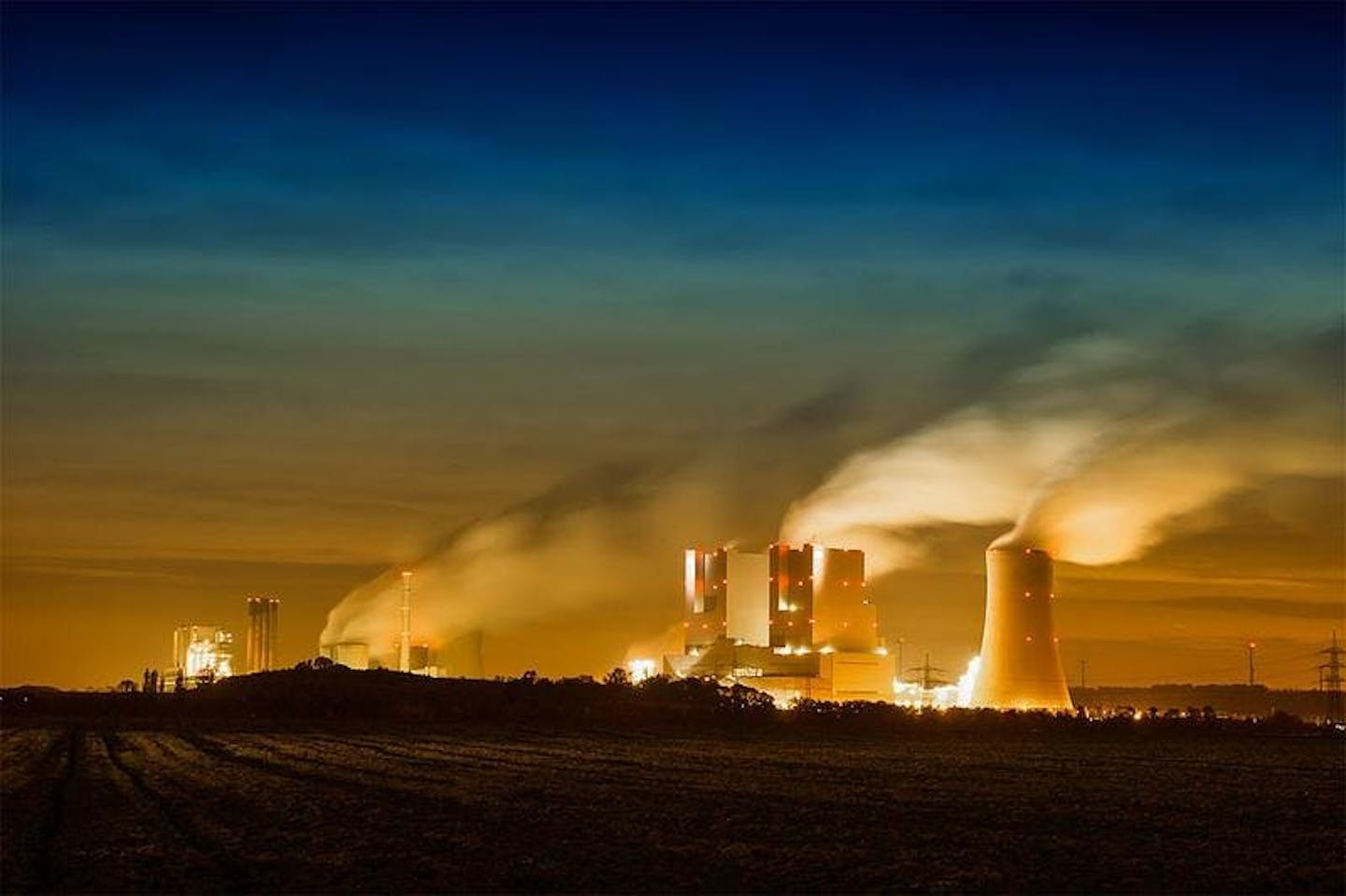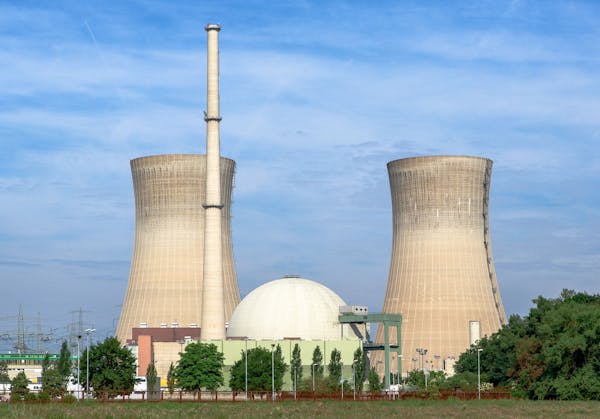Air Carbon Capture: a false climate solution promoted by the fossil fuel industry
Promoted by numerous attention-grabbing headlines of late, the technology called Air-carbon capture (ACC) is having a moment in the sun. But all the hype is encountering dark clouds of technical and economic viability, not to mention poor environmental outcomes.
A study shows that the most successful air carbon capture project to date ended up releasing 25 times more carbon than it captured.
One Canada-based company, Carbon Engineering (CE), has been lauded as the future of air carbon capture. They’ve recently received $80 million in funding, most of it coming from a handful of wealthy investors and three major fossil fuel companies -- Chevon, Occidental, and BHP.
The idea of Air-carbon Capture as a climate solution is based upon an extremely challenging technical proposition -- separate out very diffuse carbon dioxide gas suspended in the air we breathe, and capture it using a variety of technologies or biological processes, theoretically at much faster rates than the Earth’s carbon cycle would naturally remove.
In order to pull off this feat of molecular wizardry vast amounts of energy would be required.

Rendering of one small section of Carbon Engineering’s air-carbon capture plant in British Columbia, Canada.
CE’s solution would require the equivalent natural gas use of 70,000 Canadian homes for one year just to capture 1 million tons of CO2. Capturing that 1 million tons would require a wall of fans 65 feet high, 25 feet thick, and 2 kilometers long-running 24/7 without interruption for 365 days.
Its operation would create half a million tonnes of new CO2 from burning fossil fuels to power the technology.
The company claims that they are using all this carbon to make replacement synthetic fuels. But a gallon of this fuel would cost about 20 times more and result in 22-35 the CO2e emissions associated with using conventional electricity to drive an electric vehicle. Compared to regular gasoline, the cost to drive “clean” air capture fuel would be roughly three times as much as the US average pump price.
Of the roughly $80 million CE has received to date were used to build a wind farm, a 40 MW facility of wind turbines could have been built, generating about 150 GWh of zero-carbon electricity every year. The electricity from that wind farm would enable about 35,000 Tesla Model S or X cars to drive the average distance traveled by US drivers annually, with virtually no emissions.
There is only one explanation for why investors and fossil fuel companies continue to pour money into ACC – to keep the ailing fossil fuel industry alive, despite the fact that renewable energy is now cheaper and more reliable. Let’s dig into just why carbon capture is so difficult to achieve.

Currently, there are about 3.2 trillion tonnes of CO2 in the atmosphere, and humans have added nearly 40% of that CO2 since the beginning of the Industrial Revolution. While those are very big numbers, the CO2 concentration is 415 parts per million. If it were a single layer, it would be a thin blanket, not much more than 100 feet thick, covering the Earth.
In reality, this layer is diffused through about 100 kilometers of the atmosphere. To visualize this, imagine all the air inside the Grand Canyon – that only amounts to about 1,270 tonnes of CO2.
All of the technical processes for air-carbon removal stumble over this issue -- there isn’t a lot of CO2 in any given cubic meter of air, so you have to find a way to move a lot of air through a small space or move a lot of material through a lot of air. Both involve a great deal of energy.
Once you’ve concentrated the CO2 then you have a second big problem -- anything that binds with CO2 from the air is hard to break apart. So the process of breaking out the CO2 requires a lot more energy, usually in the form of heat.
Carbon Engineering talks a good game about using lower-carbon electricity to power their machines, but really, that is only a part of their energy consumption. To make their process work they need to burn huge amounts of natural gas. So even though BC has among the lowest carbon intensities of any power grid in the world, it still creates a lot of CO2 emissions. If the technology is replicated in other regions which higher carbon intensity power, the embedded emissions of the resulting “green” fuel will be even higher.
Mark Z. Jacobson of Stanford University calculates the total carbon debt of Carbon Engineering’s technology, both upstream and for processing, is 73%. That means for every ton of CO2 captured, about three-quarters of a ton of emissions are created. In the end, the small amount of reduced emissions that result from Air-carbon Capture is just a drop in the ocean compared to how much CO2 we emit every day.

One day of New York City’s emissions. Image Credit: Carbonvisuals, Creative Commons
The majority of carbon sequestration done to date has involved pumping CO2 into tapped-out oil wells, where the CO2 makes the oil easier to pump out. Every ton of CO2 put underground results in about a quarter of a ton of oil coming back up. And as oil is burned it turns into CO2, about 3.2 times as much by mass. Every ton of CO2 put underground, in other words, results in about 0.8 tons of CO2 in the air. That sounds like a net win, except that Carbon Engineering’s process is already 50-73% additional CO2, depending on how far upstream you count. So any oil brought up is still adding a lot of net CO2 to the atmosphere.
This is called Enhanced Oil Recovery, and it is one of the main reasons that companies like Occidental Petroleum have invested in the company – because it helps them extract more oil faster while getting to call it “green.”
As Jacobson points out, air-carbon capture will always have worse results than spending the same money displacing fossil fuel usage with wind and solar generation. Even if Air-carbon Capture were fully carbon-neutral, we would still have the other challenges associated with fossil fuels, such as water and air pollution resulting from drilling and mining.
Researching air-carbon capture for use post-2050 is still important for establishing the intellectual capital and basic technologies needed at some point in the future, when we have already succeeded in transitioning to clean, renewable energy and want to further reduce concentrations of carbon dioxide in the atmosphere. But attempts to commercialize them today are premature, and glowing headlines about ACC as a climate solution enable the fossil fuel industry to stick to business as usual for longer.
A much better investment would include an array of nature-based solutions that can deliver negative emissions without further polluting our atmosphere.
Read more on Clean Technica.
Explore Climate Solutions



